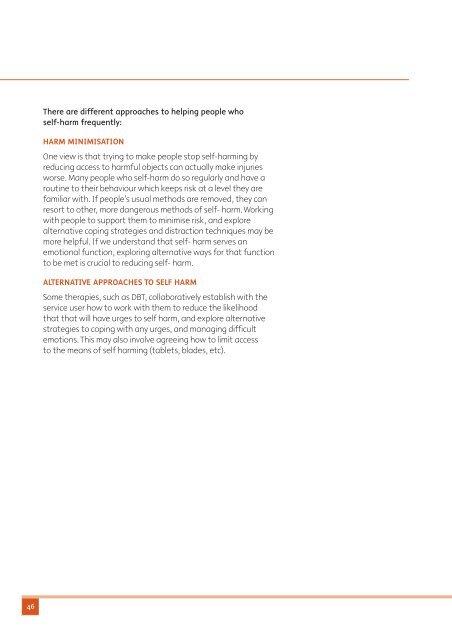Meeting-The-Challenge-Making-a-Difference-Practitioner-Guide
Meeting-The-Challenge-Making-a-Difference-Practitioner-Guide
Meeting-The-Challenge-Making-a-Difference-Practitioner-Guide
You also want an ePaper? Increase the reach of your titles
YUMPU automatically turns print PDFs into web optimized ePapers that Google loves.
<strong>The</strong>re are different approaches to helping people who<br />
self-harm frequently:<br />
HARM MINIMISATION<br />
One view is that trying to make people stop self-harming by<br />
reducing access to harmful objects can actually make injuries<br />
worse. Many people who self-harm do so regularly and have a<br />
routine to their behaviour which keeps risk at a level they are<br />
familiar with. If people’s usual methods are removed, they can<br />
resort to other, more dangerous methods of self- harm. Working<br />
with people to support them to minimise risk, and explore<br />
alternative coping strategies and distraction techniques may be<br />
more helpful. If we understand that self- harm serves an<br />
emotional function, exploring alternative ways for that function<br />
to be met is crucial to reducing self- harm.<br />
ALTERNATIVE APPROACHES TO SELF HARM<br />
Some therapies, such as DBT, collaboratively establish with the<br />
service user how to work with them to reduce the likelihood<br />
that that will have urges to self harm, and explore alternative<br />
strategies to coping with any urges, and managing difficult<br />
emotions. This may also involve agreeing how to limit access<br />
to the means of self harming (tablets, blades, etc).<br />
46


